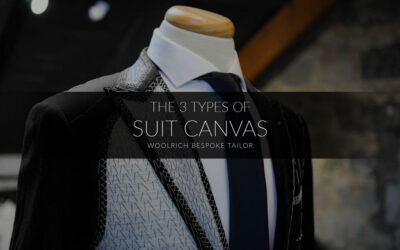How Many Suits Should a Man Own? The Essentials Explained
In the world of men’s fashion, suits play a pivotal role in defining style, professionalism, and personal brand. Whether you’re navigating the corporate ladder, attending formal events, or simply aiming to look your best, understanding how many suits a man should own is essential. This article delves into the various occasions, styles, and maintenance tips to help every man build a well-rounded suit wardrobe.
How Many Suits Should Every Man Own for Different Occasions?

What are the essential suits every man needs?
When considering how many suits should a man own, it’s vital to start with the essentials. Every man needs at least one good suit, often referred to as a “business suit,” which can be a navy suit or a gray suit. This foundational piece is suitable for interviews, meetings, and networking events. The first suit you invest in should be versatile enough to pair with different dress shirts and ties. As you expand your collection, consider adding more options, such as a charcoal suit and a light blue suit, to accommodate various occasions and seasons. Many suits should consist of a balance between classic colors and contemporary styles, ensuring that you can look great no matter the situation.
How many suits does a man need for work?
For a professional setting, a man who wears suits regularly might need three to five suits, depending on how often he needs to wear a suit to work. Those who work in a corporate environment may benefit from having multiple options to avoid wearing the same suit every day. A tailored suit that fits well will enhance your professional image. Ideally, at least two suits should be classic colors like navy or gray, while additional options can include a patterned suit or a seasonal linen suit for summer months. This variety allows you to adapt to different meetings and workplace dynamics while maintaining a polished appearance.
What types of suits should a man own for special events?
Special events often require specific suit styles that differ from everyday work attire. Many suits for such occasions should include a black suit for formal events like weddings, galas, or evening functions. Additionally, consider a brown suit or a sport coat for semi-formal gatherings, giving you the flexibility to dress up or down as needed. A well-fitted blazer can also be a great addition, as it pairs well with chinos or dress trousers and can be utilized for both casual and formal functions. Having these options ensures that you’re prepared for any special event that comes your way.
What Are the Key Suit Styles Every Man Should Consider?

The navy suit – Timeless
The navy suit is a cornerstone of any man’s wardrobe due to its versatility and timeless appeal. It can be dressed up with a crisp dress shirt and tie or down with a more casual shirt for less formal occasions. A navy pinstripe suit, in particular, offers a sophisticated twist, making it suitable for both business and social events. The navy suit is also an ideal choice for job interviews, as it conveys confidence and professionalism. Every man should consider investing in a navy suit, as it serves as a reliable foundation for many outfits.
The gray suit – Versatile
A gray suit is another essential piece that should be included in any man’s suit collection. Its adaptability allows it to be worn across various settings, from casual to formal. A charcoal suit works well in professional environments and can transition seamlessly into evening events with the right accessories. Likewise, a lighter gray suit can be perfect for summer, providing a refreshing look while maintaining sharpness. The ability to pair gray suits with different colored shirts and ties further enhances their versatility, making them a staple in every man’s wardrobe.
The black suit – A must-have
A black suit is often associated with formal occasions, making it a must-have for significant events. This suit is typically worn for evening weddings, black-tie events, and formal gatherings. However, it’s essential to choose the right fabric; a flannel suit in black may be more appropriate for colder months, while a linen suit can be ideal for summer events. Wearing a black suit can be a bold choice, signaling elegance and sophistication, especially when paired with a tailored dress shirt and polished shoes.
How to Build a Suit Wardrobe: Which Suits to Invest In?

Should every man invest in a patterned suit?
Investing in a patterned suit can elevate a man’s wardrobe significantly. A patterned suit, such as a pinstripe or checkered design, adds personality and flair to your outfit. These suits are perfect for making a statement in professional settings or special occasions. While many suits should be solid colors for versatility, having at least one or two patterned options allows you to stand out. Patterns can also be coordinated with various shirts and ties, offering endless styling possibilities.
How do you choose between a linen suit and a flannel suit?
Choosing between a linen suit and a flannel suit largely depends on the climate and the occasion. Linen suits are lightweight and breathable, making them an excellent choice for hot summer days and outdoor events. They offer a relaxed yet polished look, ideal for casual weddings or garden parties. On the other hand, flannel suits are perfect for colder weather, providing warmth and comfort. These suits exude a more formal vibe, making them suitable for business meetings or evening occasions. Ultimately, every man should assess his lifestyle and climate when selecting between these two styles.
How many suits should a man have for different climates?
Considering various climates is crucial when determining how many suits a man should own. In warmer climates, having at least two to three summer suits made from breathable fabrics like linen is advisable, while also incorporating a lightweight blazer for versatility. Conversely, in colder regions, a man might need a combination of wool or flannel suits, ensuring he has options for both professional and social events. A good rule of thumb is to have a well-rounded suit wardrobe that accommodates seasonal changes and provides comfort while still looking great.
What is the Best Suit to Wear to Work?

How can a man wear a suit to work without feeling overdressed?
Wearing a suit to work doesn’t have to feel overdressed if you choose the right style and fabric. Opting for a business suit in a lighter fabric or a more casual design can strike the right balance. Pairing your suit with a less formal dress shirt, perhaps in a light blue or patterned design, can downplay the overall look while still maintaining professionalism. Additionally, incorporating chinos or a casual blazer instead of traditional trousers can further reduce the formality, allowing you to wear a suit to work comfortably.
What are the best suit styles for a professional setting?
In a professional setting, classic suit styles such as navy, gray, and charcoal suits are ideal. These colors convey authority and professionalism, making them suitable for meetings and client interactions. Single-breasted suits are generally more versatile and can be easily dressed up or down. Investing in a tailored suit that fits well will not only enhance your appearance but also boost your confidence in the workplace. When choosing a suit to wear for work, ensure that it aligns with your company’s culture and dress code.
Does the color of the suit matter for a job interview?
Yes, the color of the suit does matter for a job interview. A navy suit is often recommended as it exudes professionalism and confidence. It is less intimidating than a black suit, making it a safe choice for most interview scenarios. Gray suits also work well, providing a friendly yet serious vibe. Wearing a good suit in these colors can help make a positive impression on potential employers. Ultimately, the right suit can set the tone for your interview and reflect your understanding of the professional environment you are entering.
How to Maintain Your Suit Collection for Longevity?
What are the best practices for cleaning and storing suits?
To maintain your suit collection for longevity, it’s essential to follow best practices for cleaning and storing. Regularly dry clean your suits to remove dirt and odors, but avoid over-cleaning, as this can damage the fabric. When storing suits, use a high-quality suit hanger that maintains the shape of the jacket. Avoid cramming your suits into a small space, as this can lead to wrinkles and creases. Instead, consider using breathable garment bags to protect them from dust while allowing air circulation.
How often should a man update his suit wardrobe?
Updating your suit wardrobe is crucial to ensure that you look modern and professional. A good rule of thumb is to assess your wardrobe every few years and replace any suits that show signs of wear and tear. Additionally, as fashion trends evolve, you may want to consider adding a new suit style or color to stay current. If you find yourself wearing a suit every day, investing in new pieces more frequently can keep your look fresh and relevant.
What are common mistakes to avoid with suit maintenance?
One common mistake to avoid with suit maintenance is neglecting proper cleaning. Overlooking stains or dirt can lead to permanent damage if not addressed promptly. Additionally, many men make the mistake of using the wrong hangers or storing suits in cramped spaces, which can cause unwanted wrinkles and distortions. It’s also important to avoid ironing suits directly, as this can damage the fabric; instead, consider steaming for a more gentle approach. By being mindful of these common pitfalls, you can ensure that your suit collection remains in excellent condition for years to come.
Read more on How to care for your suit here: Read on




